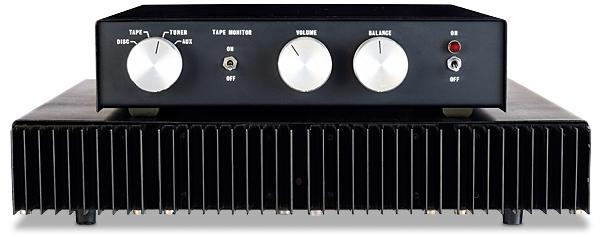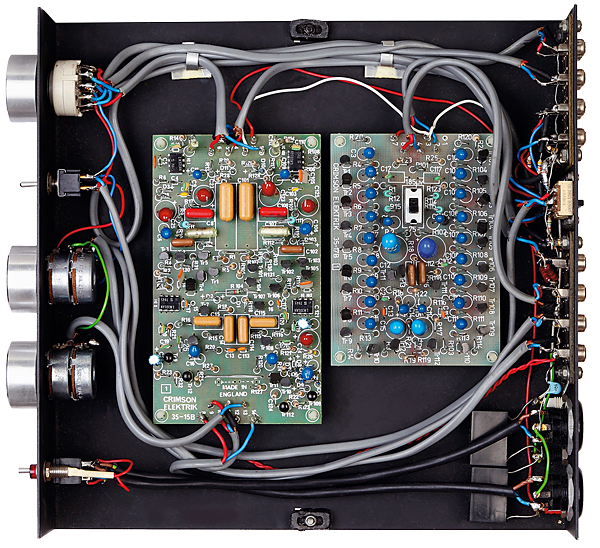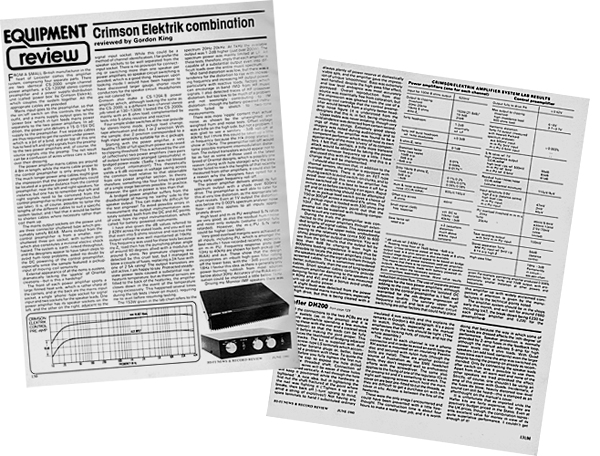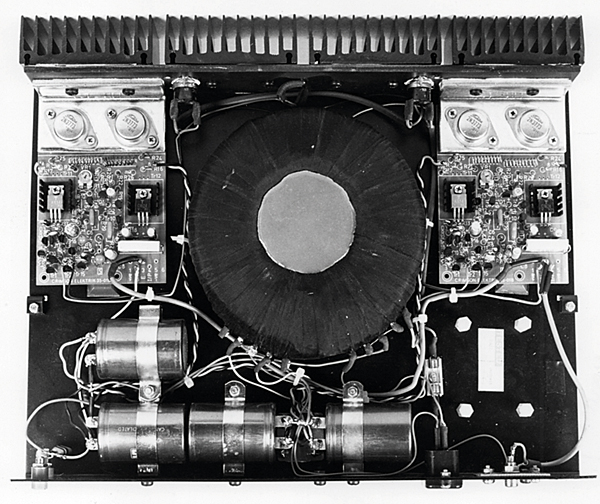Crimson Elektrik 1200 series Pre/Power Amplifiers

 They're British and they're obscure, but can these pre/power amplifiers lay claim to classic status when it comes to their all-out performance? It's time to find out...
They're British and they're obscure, but can these pre/power amplifiers lay claim to classic status when it comes to their all-out performance? It's time to find out...
British company Crimson Elektrik started life in the mid 1970s as a manufacturer of ready-built power amplifier modules. Using these, a home constructor could assemble a fairly decent and up-to-date piece of kit, needing only to add a power supply, connections and a cabinet. Complete amps followed in 1979, initially in kit form and later fully assembled. The latter, which were similar to the 1200 series amps seen here, were reviewed in the June '80 issue of HFN.
After this, Crimson's amplifiers took on a new and distinctive form having small, almost square fascias and long, deep cabinets. The first of these models was the 500 Series, but it was the 600 Series that really put Crimson on the map. Derivatives of these original 600 models were still in production until fairly recently, steadily revised over the years but still with the same signature appearance.
These amplifiers retain a small, but loyal following, but nowadays anything pre-dating the 500s can be considered fairly obscure. The system seen here was one of the first 'proper' Crimson amplifiers, complete and ready to use. It comprises a CS-1200M preamplifier and a very rare CS-1204 stereo power amplifier.
Well Connected
Despite its basic appearance, the preamp was a well specified design with many connection possibilities. In its standard form it included inputs for a turntable (MM cartridge type), a tuner, auxiliary source and a tape recorder. Users could connect a tape deck either as a normal source or as part of a tape loop, for which the source/monitor switch then came into play.

Using this latter method freed up the normal tape input for another purpose, effectively giving two spare sets of connections in what was still the pre-CD era. The turntable input offered variable capacitance loading to compensate for varying cable lengths and characteristics, a switch at the rear of the CS-1200M adding an extra 150pF if necessary.
Additionally, an MC head amplifier could be specified. This boosted the output of a moving-coil cartridge to a level sufficient enough that it could be fed into the MM stage for further amplification and re-equalisation. Two levels of MC sensitivity were offered – 75µV or 185µV – with selection achieved via the use of an internal switch.
The circuitry used was unusually complex, especially in view of the absence of tone controls, electronic signal routing or similar facilities. The main part of the unit used 22 transistors and four integrated circuits, with a further 24 transistors in the MC stage. Of these, 18 were used in two groups of nine in parallel in the first stage of the MC amplifier.
Towards Infinity
This seldom used technique aimed to reduce noise by averaging it across a large number of devices. Mathematical theory suggests the benefits improve as the number of transistors increases towards infinity, but in practice there was little point in using any more than Crimson did. Power for the CS-1200M came from a stabilised power supply unit built into a separate external enclosure in order to screen out mains hum. For the sake of convenience, the mains feed to this was routed via a switch on the preamplifier's front panel.

As well as being able to opt for the MC stage, the user also had a choice of power amplifiers with which to complete the system. The CS-1204 seen here was the basic stereo model with a claimed output of around 65W per channel. If more power was required then two CS-2000s could be specified.
Bridge Building
These units, which were mono, each had the same appearance as the CS-1204, but the two channels inside were bridged to effectively double the output capability. The basic building blocks of both these models were pairs of compact DC-coupled power amplifier modules, naturally of Crimson's own design. They used sturdy high-voltage bipolar transistors in a largely conventional quasi-complementary layout.
The resulting system was similar in appearance to those offered at the time by Quantum and Exposure while its facilities appealed to the sort of audiophile for whom the offerings from the big Japanese multinationals did not find favour.
If you are used to equipment from larger manufacturers then the rudimentary standard of finish of these Crimson units may come as a shock. The cabinets are made from folded steel without the smoothest of edges, while a thin layer of matt black paint is topped off with traditional screen-printed legends. The various knobs and fittings are standard electronics wholesaler items and user friendliness is an area that has largely been passed over.


For example, the preamp has only its most commonly used controls located at the front with potentially useful things, such as the MM/MC and mono/stereo switches, relegated to the back. More infuriatingly, the mains switch for the power amp is also at the back of the unit and is tiny, leading to plenty of potential groping about should you choose to install it in a rack.
Meanwhile, the front of the power amp has a stark appearance and is dominated by black heatsinks that serve the modules inside. In between these can be found a tiny red power indicator which is only visible if viewed directly from the front.
The preamp's power unit runs cool and has no user controls so it can be hidden away.
Ends Of The Earth
Setting up is simple enough, but having to connect the DC supply to the CS-1200M with three small separate pins is a nuisance and if not done correctly could ruin the unit – why didn't they use one of the many standard three-pin connectors available at the time I wonder? The mains connectors may not find favour with modern safety standards either, and I was alarmed to find that the casework of the preamplifier is only earthed via the signal leads to the power amplifier, despite there being unshielded mains connections inside (gulp).


















































